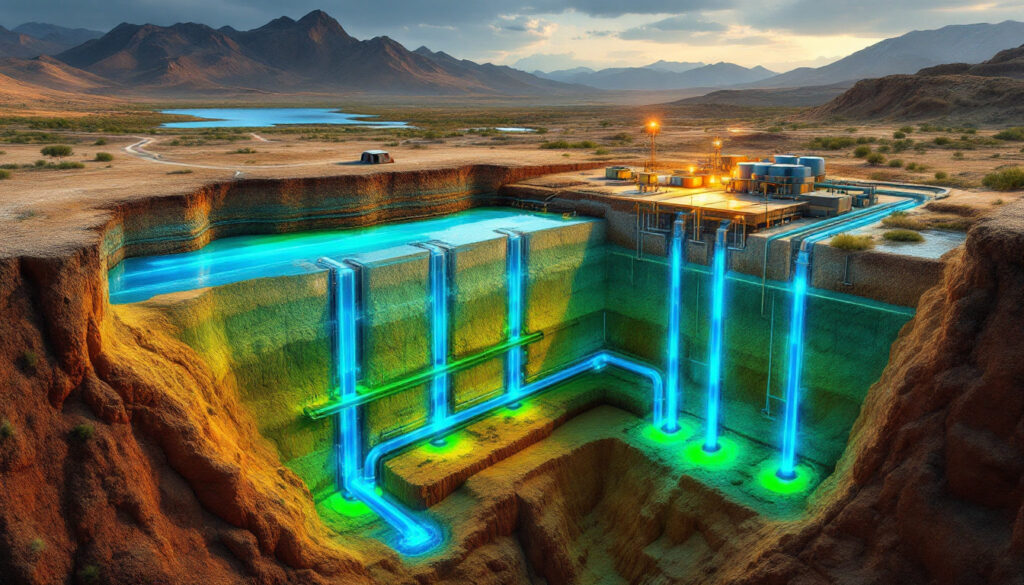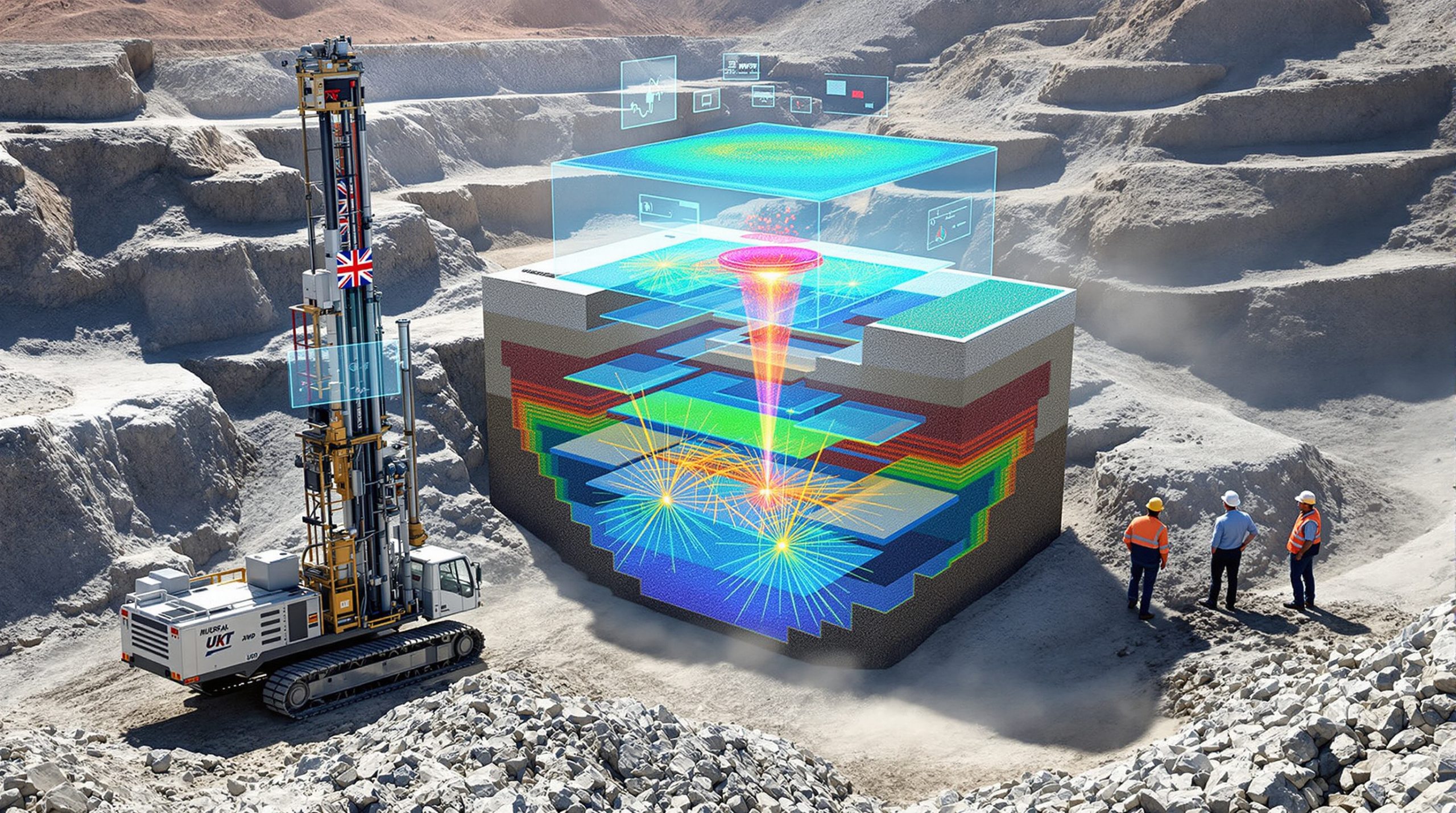What is In-Situ Mining and Why is it Environmentally Friendly?
In-situ mining represents a revolutionary approach to mineral extraction that minimizes environmental footprint while maximizing resource recovery from previously uneconomical deposits. Unlike conventional mining methods that require extensive excavation, in-situ techniques leave the orebody in place and extract minerals through solution processes.
This innovative method has gained significant attention from mining companies and environmental advocates alike due to its minimal surface disturbance. In-situ mining reduces surface infrastructure to just injection wells, processing facilities, and monitoring equipment, preserving the natural landscape and habitat.
Perhaps most significantly, in-situ mining eliminates traditional waste streams like tailings ponds and waste rock dumps that often create long-term environmental liabilities. By dissolving target minerals underground and bringing only the valuable components to the surface, the method fundamentally reimagines how we extract resources from the earth.
"In-situ mining represents a paradigm shift in how we think about resource extraction, offering a path to meeting mineral demands with significantly reduced environmental impact." – Resource World Magazine
How Does In-Situ Mining Work?
The Basic Process Explained
In-situ mining operates on fundamentally different principles than conventional mining methods. Rather than physically extracting ore through drilling, blasting, and hauling, this technique involves four key steps:
- Drilling injection and recovery wells directly into the mineral deposit
- Introducing a specialized solution that selectively dissolves target metals
- Pumping the metal-rich solution to the surface through recovery wells
- Processing the solution to recover valuable minerals before recycling the solution
This approach eliminates extensive surface disturbance, making it particularly valuable for accessing deposits that would be uneconomical using traditional methods due to depth, grade, or location near sensitive environments.
Types of In-Situ Mining Techniques
Solution Mining
The most common form of in-situ extraction uses chemical solutions to dissolve target minerals within the deposit. For copper, dilute sulfuric acid solutions selectively dissolve copper minerals, while uranium extraction typically employs oxygen-enhanced water with sodium bicarbonate or sulfuric acid.
The metal-bearing solution is then pumped to processing facilities where ion exchange, solvent extraction, or electrowinning recovers the valuable metals. The barren solution is then reconditioned and recirculated through the deposit.
Bioleaching
This innovative approach employs microorganisms such as Acidithiobacillus ferrooxidans that naturally "consume" metals of interest. These bacterial organisms catalyze the oxidation of sulfide minerals containing metals like copper, creating a solution that can be pumped to the surface without using harsh chemicals like cyanide.
Bioleaching is particularly valuable for low-grade sulfide deposits where conventional processing would be cost-prohibitive or environmentally challenging.
Hydrothermal Mining
This method applies heat to the orebody, increasing the solubility of target minerals. The heated solution containing dissolved minerals is then pumped to surface facilities for processing. Hydrothermal techniques have shown promise for deeper deposits where increased temperatures enhance mineral dissolution rates.
Wellfield design for all these methods requires specific geological conditions, including porosity greater than 10% and permeability exceeding 100 millidarcies for effective solution flow through the orebody.
What Makes In-Situ Mining Environmentally Friendly?
Reduced Surface Disturbance
Unlike open-pit operations that create massive excavations or underground mines requiring extensive tunneling, in-situ mining leaves the majority of the landscape intact. The primary surface infrastructure consists of:
- Injection and recovery wells (similar to water wells)
- Processing facilities (typically compact compared to conventional mills)
- Monitoring equipment and piping systems
- Solution holding ponds (contained and lined)
This minimal footprint preserves natural habitats and reduces visual impact on surrounding communities. For example, Taseko Mining's Florence Copper project in Arizona maintains the desert landscape while accessing copper deposits that would otherwise require extensive open-pit mining.
Elimination of Traditional Mining Waste
In-situ mining offers significant environmental advantages by eliminating or drastically reducing:
- Waste rock piles that can leach contaminants and create acid mine drainage
- Tailings ponds that pose long-term management challenges and dam failure risks
- Dust generation from blasting, crushing, and material handling
- Noise pollution from heavy equipment operation and processing
The absence of blasting and hauling operations means nearby communities experience minimal disturbance, with noise levels at in-situ sites often below 45 decibels—comparable to a library environment.
Water Management Benefits
While water usage remains a consideration, in-situ operations often implement closed-loop systems that recycle solutions, minimizing freshwater consumption. Advanced monitoring systems track solution movement to prevent contamination of surrounding groundwater.
Key protective measures include:
- Multi-layered well casings to prevent solution migration
- Maintaining negative pressure within the mining zone to control solution flow
- Extensive monitoring well networks surrounding the extraction area
- Real-time sensors tracking solution chemistry and movement
"Rigorous groundwater monitoring ensures compliance with pre-mining water quality standards throughout operations and after closure." – Resource World Magazine
What Minerals Can Be Extracted Using In-Situ Mining?
Ideal Candidates for In-Situ Extraction
Not all minerals are suitable for in-situ mining. The most compatible deposits include:
- Copper: Particularly oxide deposits and some secondary sulfides, with recovery rates exceeding 70% in formations like those at Florence, Arizona
- Uranium: Especially sandstone-hosted deposits found in Wyoming's Powder River Basin and South Texas
- Gold: Certain types of deposits amenable to solution extraction, though less common than copper and uranium applications
- Salt: Highly soluble and ideal for solution mining via freshwater injection
- Potash: Commonly extracted using solution methods where saturated brine dissolves sylvinite ore
Geological Requirements for Success
In-situ mining requires specific geological conditions to be effective:
- Porosity: The host rock must allow solutions to permeate through the deposit
- Permeability: Solutions must be able to flow through the rock formation (typically >100 millidarcies)
- Containment: Natural barriers should exist to prevent solution migration (e.g., clay layers)
- Mineral solubility: Target minerals must dissolve in the chosen solution at economical rates
- Depth: The deposit must be below the water table but accessible with reasonable drilling costs
These requirements limit in-situ applications but also ensure that when properly implemented, the method can be both environmentally sound and economically viable.
What Are the Economic Advantages of In-Situ Mining?
Cost-Effectiveness for Low-Grade Deposits
In-situ mining transforms previously uneconomic resources into viable projects by significantly reducing both capital and operating expenses:
- Capital cost reduction: In-situ projects typically require approximately 50% less upfront investment than conventional mines of similar capacity
- Lower operating expenses: Elimination of drilling, blasting, and hauling reduces energy consumption and maintenance costs
- Reduced labor requirements: Automated wellfield operations require fewer personnel than conventional mining
- Simplified processing: Direct recovery from solution often eliminates crushing, grinding, and concentration steps
These economic advantages make previously marginal deposits containing as little as 0.2% copper economically viable—resources that would remain untouched using conventional methods.
Higher Recovery Rates
Traditional mining methods often leave significant portions of the orebody behind due to economic cutoff grades. In-situ techniques can achieve higher overall recovery rates by:
- Accessing portions of deposits that would be uneconomical to mine conventionally
- Extracting metals from low-grade zones that would typically be classified as waste
- Allowing for longer-term, steady extraction compared to conventional operations
- Maintaining consistent recovery rates throughout the deposit
For example, Taseko's Florence Copper Phase 1 test facility confirmed production costs below $1.50 per pound—significantly lower than many conventional copper mining operations. Energy Fuels' Nichols Ranch ISR facility operates at approximately 90% recovery efficiency for uranium, outperforming many conventional operations.
Which Companies Are Successfully Using In-Situ Mining?
North American Operations
Several mining companies have successfully implemented in-situ mining and environmentally friendly techniques across North America:
-
Taseko Mining Ltd. (TKO-TSX) operates the Florence Copper project in Arizona, using in-situ recovery to extract copper from a deposit located between Phoenix and Tucson. The project is being developed in two phases, beginning with an 18-month production test facility before advancing to commercial operations.
-
Uranium Energy Corp. employs in-situ recovery at multiple uranium projects, including Palangana and Burke Hollow in Texas, and Reno Creek in Wyoming. The Reno Creek project alone contains approximately 19 million pounds of U₃O₈ reserves recoverable through ISR methods.
-
Energy Fuels Inc. runs the Nichols Ranch in-situ recovery mine and processing facility in Wyoming's Powder River Basin. This operation has a licensed capacity of 2 million pounds of U₃O₈ annually—produced at what the company reports as Wyoming's lowest operational costs.
International Applications
The technique has gained traction globally:
-
Heathgate Resources operates the Beverly and Beverly North uranium mines approximately 550 km north of Adelaide, Australia, using in-situ recovery methods. These operations have produced approximately 1,000 tonnes of uranium per year since 2000 in an arid region where water conservation is critical.
-
BHP's Olympic Dam in South Australia has conducted research into in-situ leaching of copper from portions of its massive deposit that aren't economically viable through conventional methods.
-
Kazatomprom in Kazakhstan has become the world's largest uranium producer largely through extensive use of in-situ recovery methods across numerous deposits.
What Are the Limitations and Considerations of In-Situ Mining?
Environmental Monitoring Requirements
While environmentally advantageous, in-situ mining requires rigorous monitoring systems:
- Regular groundwater sampling around the operation (typically monthly)
- Continuous tracking of solution movement through observation wells
- Monitoring of well integrity to prevent leakage
- Post-mining restoration of groundwater quality, a process taking 2-5 years
Regulatory bonds for site closure often exceed $10 million to ensure compliance with restoration requirements and proper abandonment of wells.
Geological Constraints
Not all deposits are suitable for in-situ mining due to:
- Insufficient porosity or permeability in the host rock
- Presence of natural fractures that could allow solution escape
- Mineral types that resist dissolution in practical solutions
- Proximity to drinking water aquifers
- Highly variable geology that creates preferential flow channels
These constraints require extensive geological characterization before implementing in-situ techniques, including detailed core analysis, hydrological testing, and geophysical surveys.
Regulatory Considerations
In-situ mining operations must navigate comprehensive regulatory frameworks:
- Groundwater protection permits from state and federal agencies
- Monitoring and reporting requirements throughout operation
- Restoration standards for post-mining conditions
- Bonding requirements to ensure proper closure
- Public consultation processes and stakeholder engagement
These regulatory hurdles can sometimes delay project development. For example, Uranium Energy Corp's Burke Hollow project faced nearly three years of permitting processes before receiving final approvals.
How Might In-Situ Mining Evolve in the Future?
Technological Innovations
The future of in-situ mining may include several promising developments:
- Advanced solution formulations that increase selectivity and reduce environmental impact
- AI-driven wellfield optimization that could reduce solution usage by approximately 20% while improving recovery
- Improved monitoring technologies using real-time sensors and fiber optic systems
- Enhanced bioleaching organisms developed through biotechnology that could enable extraction of previously resistant minerals
- Nanoparticle tracers that improve solution flow tracking in complex geological environments
These innovations may significantly expand the application of in-situ techniques to new deposit types and challenging geological settings.
Expanding Applications
As technology advances, in-situ techniques may extend to:
- Critical minerals: Including lithium from brines and potentially rare earth elements
- Deeper deposits: Beyond the reach of conventional mining but accessible with advanced directional drilling
- Higher-grade deposits: Where environmental considerations outweigh traditional methods
- Previously mined areas: To recover remaining minerals from pillars or low-grade halos around historic mines
In-situ methods could unlock an estimated 15 billion pounds of "stranded" copper resources globally by 2030—resources that would otherwise remain unexploited due to economic or environmental constraints.
FAQ: Common Questions About In-Situ Mining
Is in-situ mining safe for nearby communities?
When properly designed and monitored, in-situ mining poses minimal risk to surrounding communities. The absence of blasting, dust, and noise creates fewer disturbances than conventional mining operations. No community displacement has been reported at major ISR projects such as Beverly (Australia) and Nichols Ranch (Wyoming).
How does in-situ mining affect groundwater?
Regulatory requirements mandate extensive groundwater protection measures, including:
- Multiple layers of well casing to prevent leakage
- Comprehensive monitoring networks surrounding the wellfield
- Maintaining negative pressure within the mining zone to control solution flow
- Post-mining restoration of groundwater quality to meet regulatory standards
These measures, when properly implemented, have demonstrated successful protection of surrounding aquifers.
Can in-situ mining be used for any mineral deposit?
No, the technique requires specific geological conditions and is most suitable for minerals that readily dissolve in water or other solutions. Deposits must have adequate porosity and permeability to allow solution flow.
Primary determinants include:
- Mineral solubility in environmentally acceptable solutions
- Host rock permeability and porosity
- Presence of confining layers to prevent solution migration
- Depth relative to groundwater systems
How does the cost of in-situ mining compare to conventional methods?
For suitable deposits, in-situ mining typically offers significantly lower capital and operating costs compared to conventional mining. This cost advantage makes previously uneconomic low-grade deposits commercially viable.
Key economic advantages include:
- Elimination of expensive mining equipment
- Lower energy consumption for material movement
- Reduced processing infrastructure
- Smaller workforce requirements
- Lower site remediation costs at closure
What happens to the site after in-situ mining is complete?
After mining concludes, companies must restore groundwater quality to pre-mining conditions or established standards. This typically involves:
- Flushing the formation with clean water
- Treating recovered water through reverse osmosis and ion exchange
- Continuous monitoring until regulatory standards are met
- Properly abandoning wells according to regulatory requirements
- Removing surface facilities and reclaiming disturbed areas
The resulting landscape shows minimal evidence of mining activity compared to conventional methods.
Conclusion: The Future Role of In-Situ Mining in Sustainable Resource Development
In-situ mining represents a promising direction for the mining industry as it balances resource extraction with environmental protection. By minimizing surface disturbance, eliminating traditional waste streams, and reducing energy consumption, this approach aligns with growing demands for more sustainable mining benchmark practices.
As technology advances and experience grows, in-situ mining techniques will likely expand to additional mineral types and geological settings, potentially transforming how we approach resource development globally. For low-grade deposits that would otherwise remain undeveloped, in-situ mining offers both economic viability and environmental advantages that traditional mining methods cannot match.
The method aligns with UN Sustainable Development Goal 12 (Responsible Consumption and Production) by fundamentally redesigning how we extract minerals while minimizing waste generation and environmental impact. As demand for metals continues to grow—particularly for those needed in renewable energy technologies—environmentally friendly extraction methods like in-situ mining and environmentally friendly approaches will become increasingly important.
"In-situ mining represents not just an alternative to conventional mining, but potentially the future of sustainable resource development for many deposit types." – Resource World Magazine
For investors, communities, and environmental stakeholders alike, the continued development and implementation of digital twins in mining and other technologies offer a path toward meeting global mineral needs while respecting environmental values. Furthermore, the industry's focus on decarbonisation in mining and addressing mining ESG challenges is complemented by implementing green transformation strategies that include innovative extraction methods like in-situ mining.
Looking for Investment Opportunities in Eco-Friendly Mining Companies?
Stay ahead of the market with real-time alerts on ASX-listed companies pioneering environmentally friendly mining techniques like in-situ extraction. Visit Discovery Alert's discoveries page to understand how significant mineral discoveries can generate substantial returns, powered by the proprietary Discovery IQ model that turns complex mining data into actionable investment insights.




